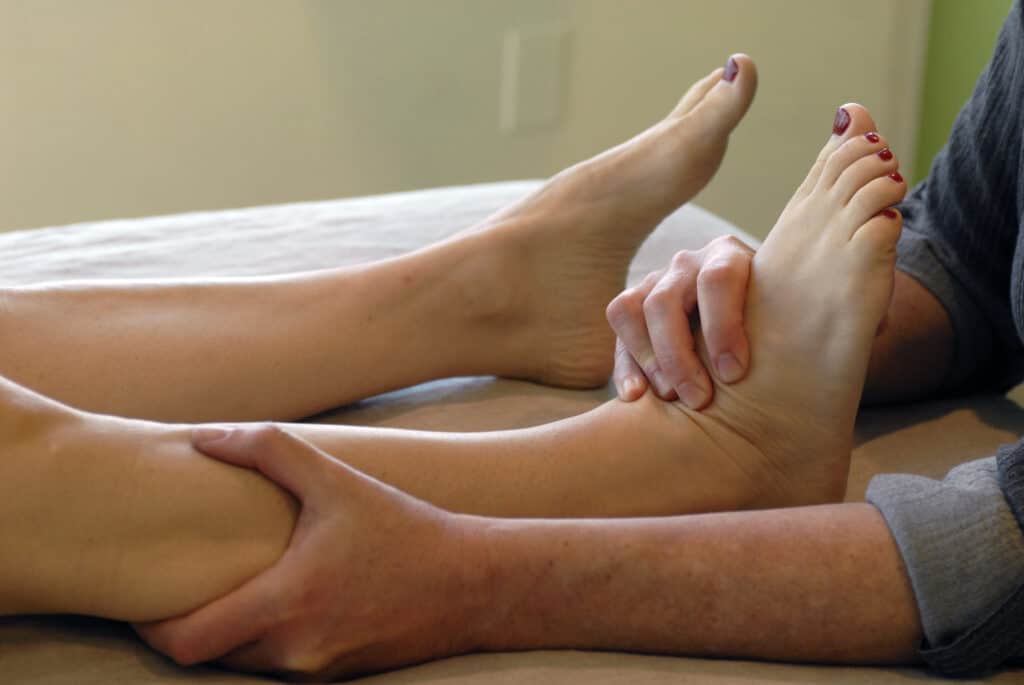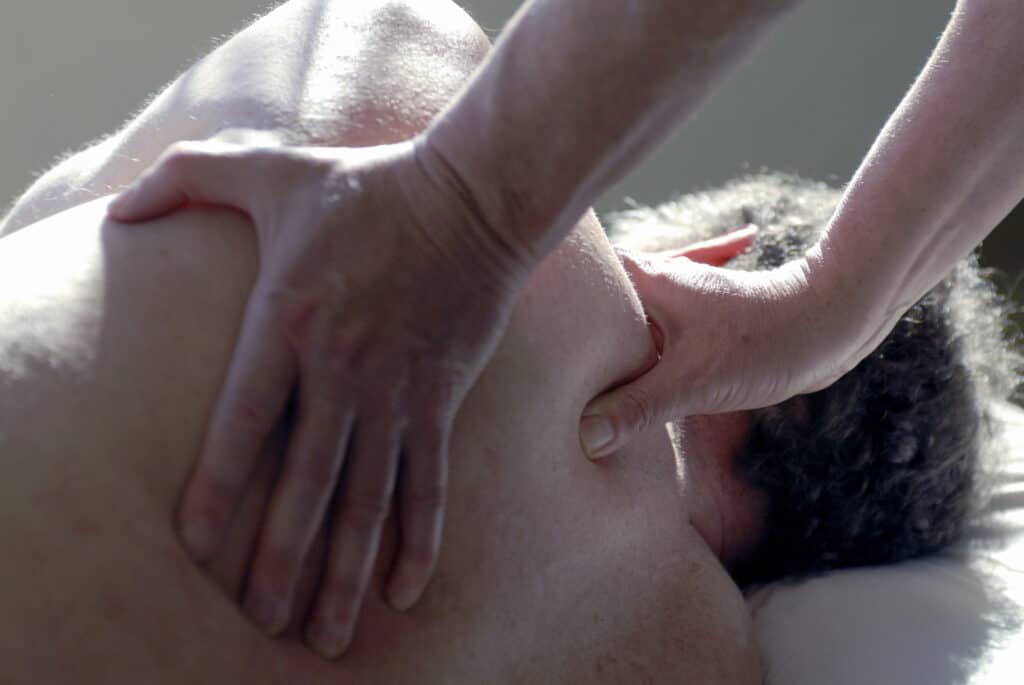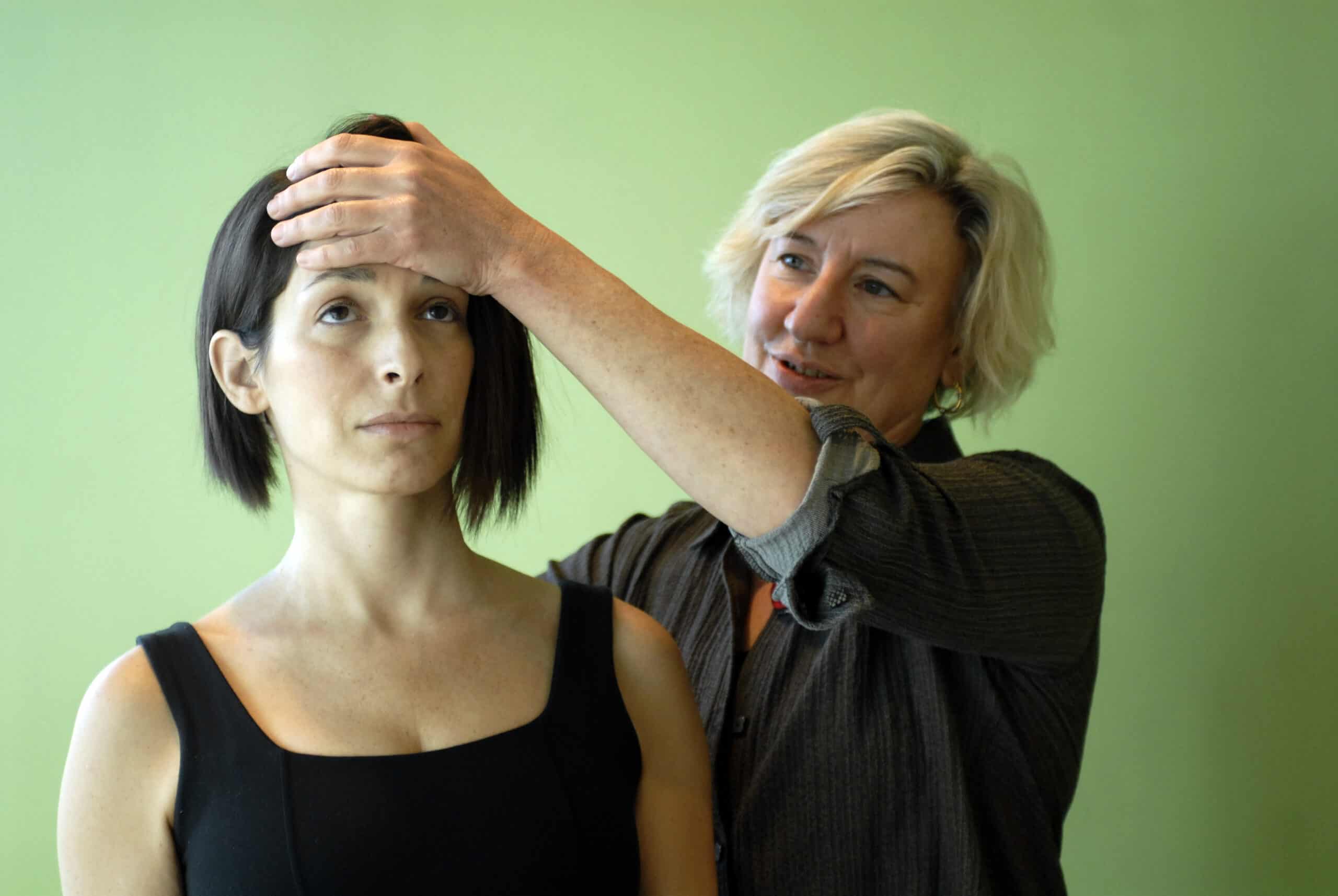

What is Rolfing?
Rolfing is more than a way of working with muscles and deep connective tissue: it is a way of changing deep set patterns of posture, movement and tension through manipulation and movement re-education. By releasing the holding patterns in the tissue and nervous system, the root causes of your symptoms, your body can be freed to find an easier, pain-free way to move through your daily activities. Rolfing is an effective approach to address the after-effects of accidents and injuries, for chronic neck, back and joint pain, for poor posture, tension and anxiety. Rolfing can also be a valuable tool for deepening your practice of yoga, martial arts or Tai Chi, as well as for improving athletic performance.
Aline offers individual Rolfing sessions, as well as the basic 10 series—Ida Rolf’s original progression—and advanced work. Each session combines structural work with perceptual education that gives you tools to address your particular situation.
Rolfing Movement Sessions
Although you probably don’t spend much time thinking about it, one of the most important problems for your brain and body are how not to fall down. Whatever activity you are engaged in, your relationship with the force of gravity is going to be affected by your every move. Before you lift your hand to reach for your teacup, the postural ‘system’ is making adjustments to keep you on your feet, or to keep your head oriented in space. This is the real basis of posture: the dynamic activity of keeping our balance in the field of gravity—not the “stand up straight, get your shoulders back” that you used to hear from your mother. Breathing, standing and walking are the basic movements on which all our lives depend. Posture underlies all of them.
Balancing in the gravity field depends on the mind’s model of how the body and the world interact—proprioception, or how we know where we are. Chronic pain and tension result from habits in this system, habits of perception. These habitual attitudes lead to the repetitive movements and tension patterns—habits of coordination–that eventually turn into structural imbalances. For the most long-term relief, you need to do more than release restrictions: you need to change the way you move.
Most of the activity of your postural system takes place beneath your conscious awareness, and has already occurred before your intended movement begins. So you can’t make changes by using more effort or trying to stand up straight with deliberate control. What you can do is to change the input to the system, the sensory information that leads to the movement patterns.
This is the role of Rolfing Movement Integration: to help you rediscover your relationship with gravity through your senses. Then you can take an active role in shaping your movement patterns by changing how you perceive the world. RMI gives you the tools you need to find new movement options on the job or at play, in a way that accesses your body’s innate intelligence and gets you working most effectively with gravity.
